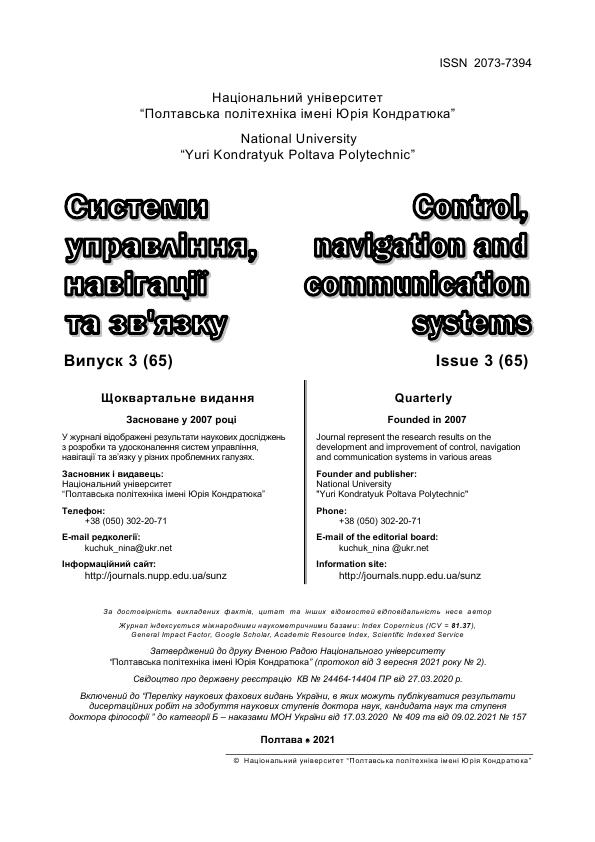THE CONSTRUCTIVE IMPLEMENTATION OF LIEBIG’S LAW OF THE MINIMUM IN THE PARADIGM OF SYNTHESIS OF A NEURAL NETWORK SUBJECT STATE CLASSIFIER
DOI:
https://doi.org/10.26906/SUNZ.2021.3.113Keywords:
Liebig's law of the minimum, neural network, ensemble of neural network models with forced learningAbstract
Liebig's law of the minimum is one of the fundamental laws in ecology, which states that the most significant factor for the organism is the factor that deviates most from its optimal value and at the same time most significantly limits the successful life of the organism, being the weakest link in the chain of its ecologic needs. Therefore it is very important to identify the weak link in the life of organisms while classifying and predicting ecologic conditions. However, taking into account ambiguity of the factor influence, compensation of the influence of some factors by others, as well as the synergistic effect of influencing the result, Liebig's law should be considered as a law operating under conditions of a high degree of uncertainty, which makes it difficult to apply it effectively in some cases. The purpose of the article is to find a deterministic relationship of input factors with an objective function (a set of indicators of the study subject state), which involves the synthesis of an ensemble of neural network models with forced learning on retrospective data examples, to ensure their adequacy, performance and accuracy, to create an algorithm for modifying the value of input factors for a given class the state of the study subject for a pragmatic, highly effective use of Liebig's law in practice. In the paper it is considered a technology for quantitative evaluation of the determining force of influencing factors on the organism state based on the synthesis of an ensemble of adequate models of the relationship between the space of input factors and the state of the study subject. A quantitative differential evaluation of the influence of input factors on the state of the subject was carried out; the adaptation of input factors to the objective state of the study subject was algorithmized. It expands the possibilities of practical application of the Liebig’s law of the minimum, both in the quantitative evaluation of problematic ecologic factors, and in their variations to achieve the required state of the subject. The invariance of the developed technology for the quantitative evaluation of the determining force of the input factors to the features of the subject area has been established, which makes it possible to extend the obtained results to the animal and plant world and emphasizes the universality of the provisions of Liebig's lawDownloads
References
Brodskiy A.K. Brief course of general ecology. SPb: Dean, 2000. – 224 p.
Khotuntsev Yu.L. Ecology and ecological safety. M.: Academia, 2004. – 480 p.
Haykin S. Neural Networks: A Comprehensive Foundation, 2nd Edition. McMaster University, Ontario Canada, 1998. – 842 p.
Aloshin S.P. Neyrosetevoy bazis podderzhki resheniy v prostranstve faktorov i sostoyaniy vysokoy razmernosti. – Poltava: Izd.«Skaytek», 2013. – 208 p.
Alyoshin S.P. Situatsionnyye tsentry bystrogo reagirovaniya: prinyatiye resheniy v srede neyroemulyatorov // Systemy upravlinnya, navihatsiyi ta zv’yazku – 2011. – No 1 (17). – Pp. 240 – 247.
Alyoshin S.P., Haitan O.M. Neural network modeling of the process of non-invasive screening-analysis of oxygen saturation providing the invariance to the impact of masking factors // Modern engineering and innovative technologies. – 2021. – Issue 16. Part 2. – P. 83 – 89.
Alyoshin S.P., Haitan O.M. Intelligent technologies of strategic enterprise management in the basis of artificial neural networks // Modern engineering and innovative technologies. – 2020. – Issue 14. Part 2. – P. 24 – 29.
Borovikov V.P. STATISTICA NN – Tekhnicheskoye opisaniye. M.: Mir, 1999. – 239 p.




